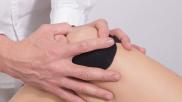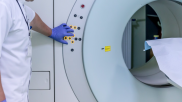| Today's News and Trends | The American Board of Radiology (ABR) made significant changes to its certification program for diagnostic radiologists in recent years, removing the oral component of the exam and relying on a standardized format with multiple-choice questions. This shift toward psychometric testing has made the certification program less reliable, according to a new analysis published by the Journal of the American College of Radiology, and the ABR should consider working with various stakeholders and education experts to change it. The American Board of Radiology (ABR) made significant changes to its certification program for diagnostic radiologists in recent years, removing the oral component of the exam and relying on a standardized format with multiple-choice questions. This shift toward psychometric testing has made the certification program less reliable, according to a new analysis published by the Journal of the American College of Radiology, and the ABR should consider working with various stakeholders and education experts to change it. | | |
| Most radiologists decide to pursue the specialty during medical school—particularly during their clinical years. But those who opt for radiology based on its financial benefits over intellectual stimulation are ultimately less satisfied in their careers, according to a report in Clinical Problems in Diagnostic Radiology. Most radiologists decide to pursue the specialty during medical school—particularly during their clinical years. But those who opt for radiology based on its financial benefits over intellectual stimulation are ultimately less satisfied in their careers, according to a report in Clinical Problems in Diagnostic Radiology. | | |
| When primary care physicians refer adult patients for MR imaging for traumatic knee symptoms, it provides no additional value and leads to higher healthcare costs, according to a new study by Dutch researchers published in Radiology. When primary care physicians refer adult patients for MR imaging for traumatic knee symptoms, it provides no additional value and leads to higher healthcare costs, according to a new study by Dutch researchers published in Radiology. | | |
| As radiologists become increasingly familiar faces on news sites and in police blotters, one Indiana University professor is suggesting the physicians might be prone to law-breaking due to their steep salaries and a professional culture centered around compliance. As radiologists become increasingly familiar faces on news sites and in police blotters, one Indiana University professor is suggesting the physicians might be prone to law-breaking due to their steep salaries and a professional culture centered around compliance. | | |
| A real-time look at how mice’s immune systems repair their brain lining, or meninges, after concussion or mild traumatic brain injury (mTBI) is providing insight into how the human brain heals itself in similar situations, the National Institutes of Health reported this week. A real-time look at how mice’s immune systems repair their brain lining, or meninges, after concussion or mild traumatic brain injury (mTBI) is providing insight into how the human brain heals itself in similar situations, the National Institutes of Health reported this week. | | |
| The American College of Radiology (ACR) announced this week it is celebrating the 10-year anniversary of its National Radiology Data Registry (NRDR). The American College of Radiology (ACR) announced this week it is celebrating the 10-year anniversary of its National Radiology Data Registry (NRDR). | | |
| Trace-Ability, a Los Angeles-based radiopharmaceutical company, announced that the FDA has approved the first use of its solution, Tracer-QC, for release testing Ammonia N 13 Injection at Massachusetts General Hospital (MGH) in Boston. Trace-Ability, a Los Angeles-based radiopharmaceutical company, announced that the FDA has approved the first use of its solution, Tracer-QC, for release testing Ammonia N 13 Injection at Massachusetts General Hospital (MGH) in Boston. | | |
| A coin-sized gadget that would allow for simultaneous MR imaging has received a $228,325 Small Business Technology Transfer (STTR) grant from the National Institutes of Health (NIH). A coin-sized gadget that would allow for simultaneous MR imaging has received a $228,325 Small Business Technology Transfer (STTR) grant from the National Institutes of Health (NIH). | | |
| MRI might be best used as a critical diagnostic tool for radiologists, but outside of the specialty, researchers have used the powerful machines to image patients’ brains while they do things from play video games to sing opera. MRI might be best used as a critical diagnostic tool for radiologists, but outside of the specialty, researchers have used the powerful machines to image patients’ brains while they do things from play video games to sing opera. | | |
| |
|
| ![]() | |
|











